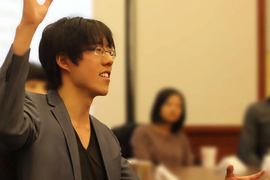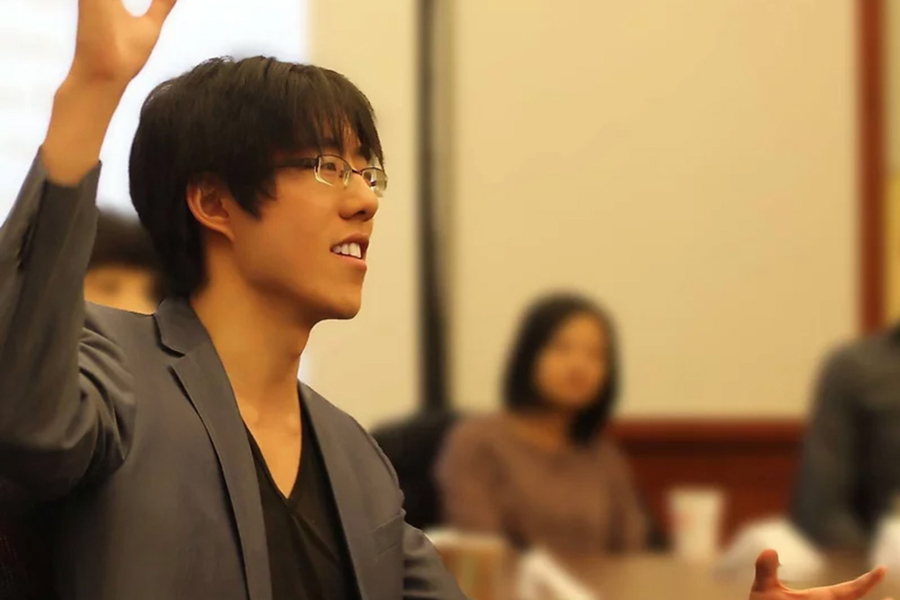In the U.S., ethnic East Asians are often depicted as a “model minority” and assumed to be thriving in educational and professional terms. But reality is more complex. A new study co-authored by Jackson Lu, the Mitsui Career Development Professor in the MIT Sloan School of Management, finds that students of East Asian descent often struggle in U.S. business schools and law schools, seemingly due to a culturally influenced lack of vocal assertiveness in these classroom settings — where verbal participation is prized.
The results of the study, which analyzes the performance of over 19,000 students and draws on a variety of data sources, are detailed in a new paper, appearing this week in the Proceedings of the National Academy of Sciences. The authors are Lu, who studies culture and globalization; Richard E. Nisbett, the Theodore M Newcomb Distinguished University Professor Emeritus of Psychology and Research Professor Emeritus at the University of Michigan; and Michael W. Morris, the Chavkin-Chang Professor of Leadership at the Columbia Business School. MIT News asked Lu to discuss their research.
Q: What are the main findings of the paper, and how do they stand in contrast to the currently received wisdom on the subject?
A: In the U.S., Asians are commonly assumed to be the “model minority,” excelling across all educational stages. Our studies challenge this assumption by revealing that East Asians, such as ethnic Chinese — but not South Asians, such as ethnic Indians — have underperformed in U.S. law schools and business schools. This is not because East Asians overall are less academically motivated or less proficient in English, but because their low verbal assertiveness, a characteristic common though certainly not universal among East Asian students, is culturally incongruent with the assertiveness prized by U.S. law schools and business schools. Consistent with the assertiveness mechanism, East Asians’ underperformance is more pronounced in courses emphasizing class participation, including leadership and strategy, than in quantitative courses such as accounting and finance.
Q: What are the practical implications? How can graduate schools construct a more “culturally inclusive classroom environment,” as you describe it in the paper?
A: Rather than assuming that Asians always excel academically, educators should recognize East Asians’ underperformance in U.S. law schools and business schools. This underperformance is noteworthy because success in these professional schools can be consequential for careers in the political and corporate worlds. By revealing a “bamboo ceiling” in the classroom, our research highlights the importance of fostering an inclusive classroom for students from diverse cultural backgrounds. One strategy, for example, is “warm calling”: An instructor could post discussion questions before class and ask students to share their responses privately. If there are insightful responses from unassertive students, the instructor could inform them in advance that they will be called upon to share during class. Another way is to provide additional channels of class participation, such as an online forum where students post comments after class.
Q: To what extent do we see performance variation within, and not just across, ethnic groups? Also, does this research correspond with previous findings about, say, gender and these issues? Overall, then, how much does evidence suggest these graduate classroom are complex places in many dimensions — again, more than pedagogy may reflect?
A: Notably, East Asians’ underperformance existed for both foreign-born and U.S.-born students, suggesting that it could not be explained by just English proficiency. Moreover, among East Asians, students who were more verbally assertive and participative in the classroom had higher grades on average.
In a similar vein, our previous research [co-authored with Morris] has found that female students underperform in U.S. business schools not because they exert less effort, but because their lower assertiveness is incongruent with the assertiveness prized by U.S. business schools.
Our research demonstrates that pedagogical practices, even without discriminatory intent, may nonetheless adversely impact students from certain cultural backgrounds. Professors should appreciate cultural differences among students and value both the quantity and quality of class participation. As U.S. law and business schools become more diverse, educators should adapt their teaching and recognize that there can be more than one prototype of a successful JD or MBA student.









